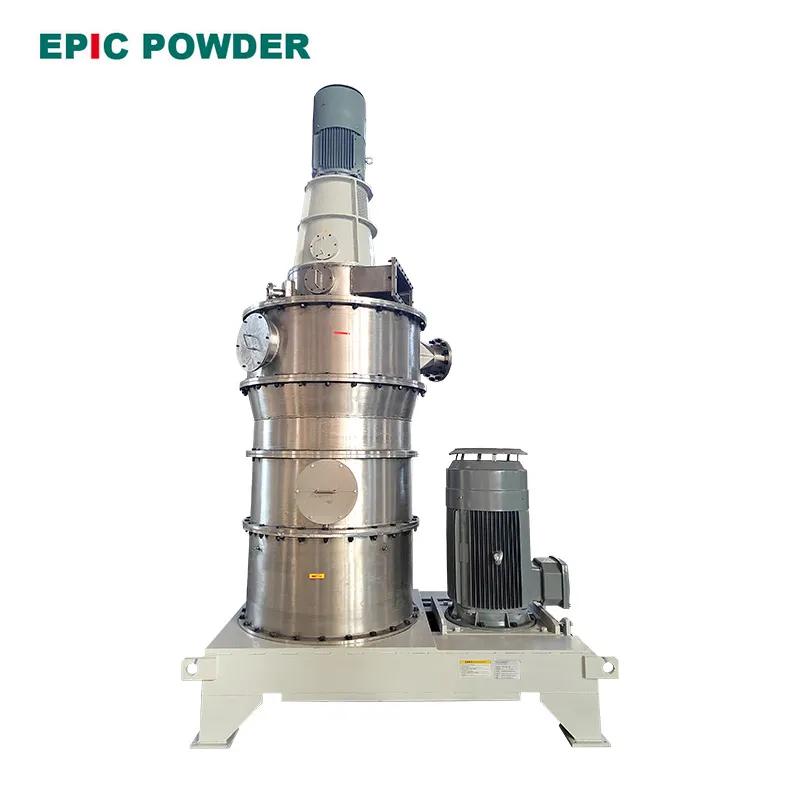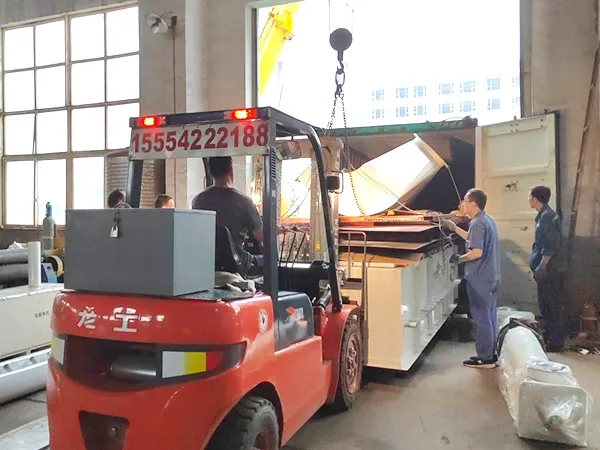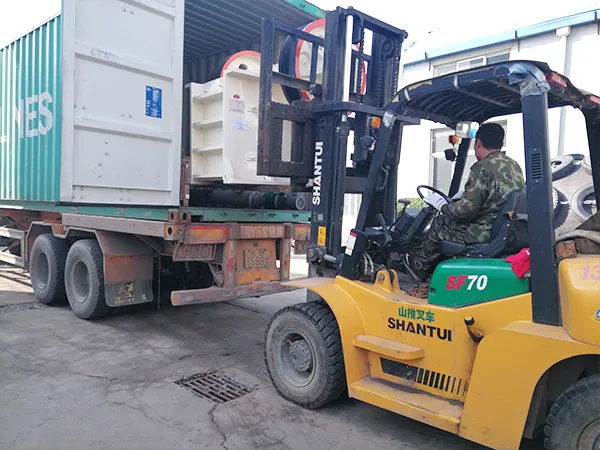그만큼 공기 분류 밀 (ACM) is a core piece of equipment in the field of modern ultra-fine powder processing. It ingeniously combines mechanical impact crushing with air classification technology to efficiently and stably produce micron-sized powders with a narrow particle size distribution. Through this Q&A format, we will comprehensively analyze the ACM’s working principle, advantages, and applications.
Q1: What is an Air Classifier Mill (미국화학물질관리협회(ACM)), and how does it differ from a conventional mill?
.webp)
A: The Air Classifier Mill (ACM) is an ultra-fine grinding machine that integrates both pulverization 그리고 classification functions.
The main difference is:
- ACM: The core lies in its built-in dynamic classification system. After the material is crushed by high-speed impact in the grinding chamber, the airflow carries the material to the upper classifier wheel. The classifier wheel, based on its set speed, precisely separates the acceptable fine powder and automatically returns the oversized, non-compliant coarse powder to the grinding chamber for re-grinding, thereby achieving a “grinding and classifying in one” closed-loop circulation.
- Conventional Mill: Only performs the grinding function. The resulting powder has a wide particle size distribution and requires a separate classifier for post-processing.
Q2: What is the working principle of the ACM? How does it achieve ultra-fine grinding?
A: The working principle of the ACM mainly involves three steps:
Impact Grinding: Material enters the grinding chamber through the feeding port. The high-speed rotating rotor or hammers impact it strongly. They shear and friction it. This quickly crushes the material into fine particles.
Air Transport and Circulation: The crushed material is carried by the airflow generated by the fan into the upper classifying area.
Precise Classifying: 그만큼 dynamic classifier wheel located at the top rotates at high speed, applying centrifugal force to the particles in the airflow.
- Acceptable Fines: Fine particles with smaller diameters experience a drag force from the airflow that exceeds the centrifugal force. This allows them to pass through the classifier wheel and enter the collection system.
- Unacceptable Coarse Particles: Coarse particles with larger diameters encounter a centrifugal force stronger than the drag force. This throws them back into the grinding chamber for secondary pulverization.

Q3: What advantages does the ACM have compared to other ultra-fine mills (such as the Jet Mill)?
A :Compared to the pure Jet Mill, the ACM offers the following advantages:
| Feature/Comparison Item | Air Classifier Mill (ACM) | 제트 밀 |
| Grinding Mechanism | Mechanical impact and shear | Particle-to-particle collision (air acceleration) |
| Energy Efficiency | Suitable for low to medium-hardness materials; relatively lower energy consumption. | Higher energy consumption; suitable for extremely hard materials or achieving ultimate fineness. |
| Final Fineness | D97 is typically controllable between 10μm and 75μm. | D97 can typically reach between 1μm and 10μm. |
| Particle Size Control | Extremely narrow PSD; high classification accuracy. | Narrow PSD; achieves finer ultimate fineness. |
| Output | Higher single-machine output; higher efficiency. | Relatively lower output. |
Q4: Which industries and materials primarily use the ACM Classifier Mill?
A: The ACM has an extremely wide range of applications, excelling at processing low to medium-hardness, non-metallic, and non-adherent materials:
- Chemical Industry: Pigments, dyes, pesticides, flame retardants, fine chemicals.
- Food/Pharmaceuticals: Sugars, food additives, herbs, starch derivatives (e.g., cassava flour, cellulose).
- Mineral Industry: Heavy calcium carbonate, talc, kaolin, wollastonite (for ultra-fine or pre-modification processing).
- Plastics/New Materials: Powder coatings, resins, composite materials.
Q5: How can the fineness of the product be controlled by adjusting the ACM’s parameters?
A: The most crucial way to control the fineness of the ACM product is by adjusting the classifier wheel speed:
- Increasing the classifier wheel speed: The centrifugal force increases, throwing finer particles (a stricter cut size) back into the grinding chamber, resulting in a finer product fineness and a slight decrease in output.
- Decreasing the classifier wheel speed: The centrifugal force decreases, allowing coarser particles to pass, resulting in a coarser product fineness and increased output.
Secondary optimization can be achieved by adjusting the mill’s air volume, feeding rate, 또는 changing the type of beating device.
Q6: Is the 미국화학물질관리협회(ACM) suitable for processing heat-sensitive or flammable/explosive materials?
A:The ACM is suitable for processing most heat-sensitive materials.
The large airflow passing through the mill efficiently carries away the heat generated during grinding. This keeps the grinding temperature relatively low.
For heat-sensitive materials, a cold air circulation system can be used. It injects pre-cooled air or inert gas (like nitrogen) into the chamber to further lower the temperature.
We can design the ACM as an explosion-proof model for flammable and explosive materials. We can pair it with an inert gas protection system to ensure production safety.

